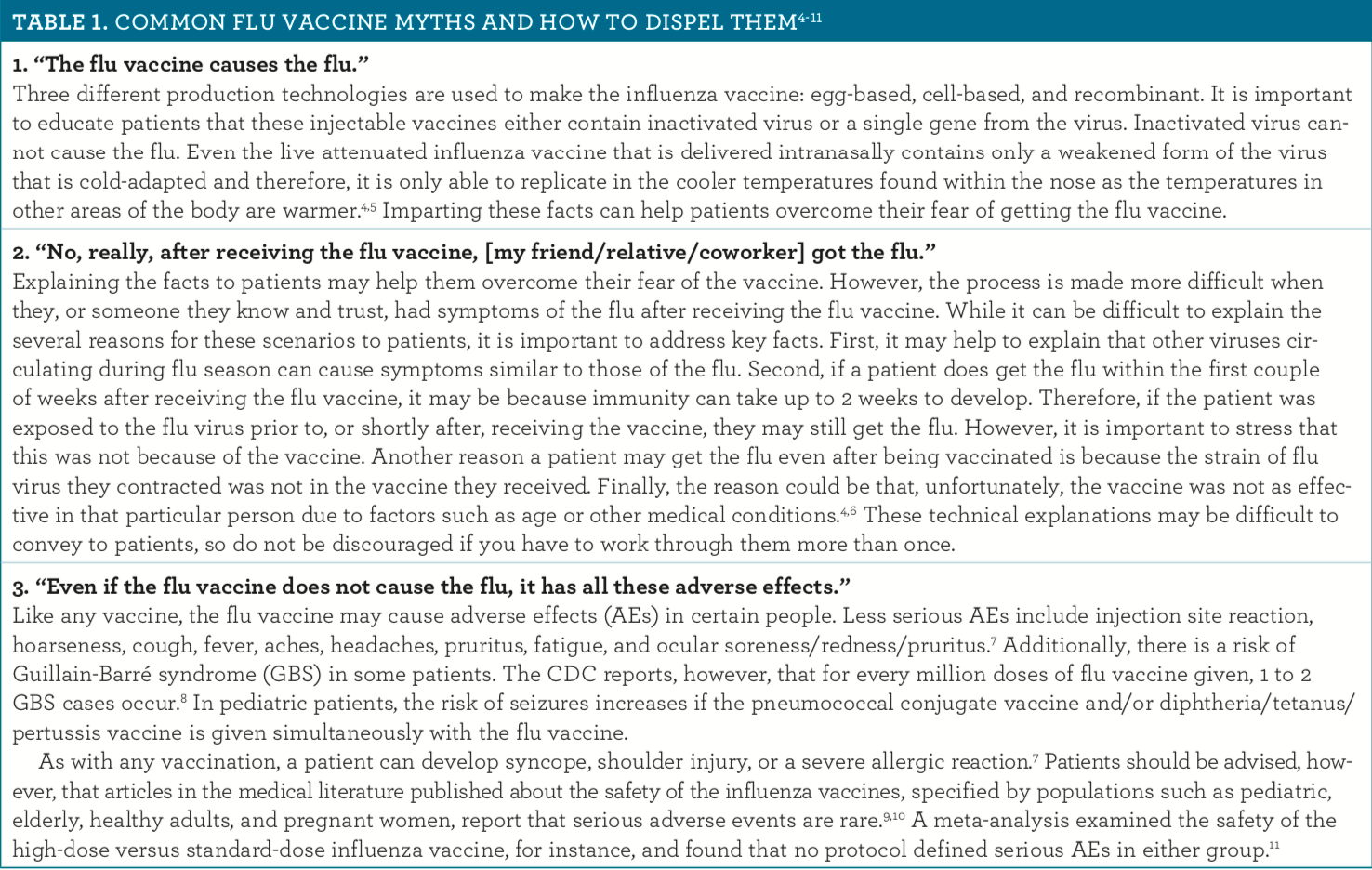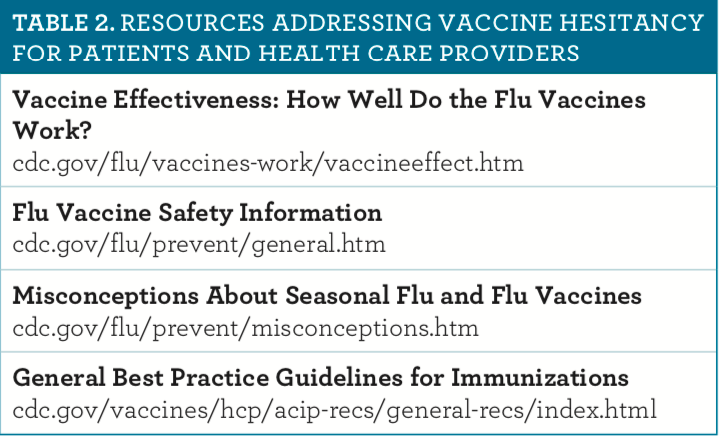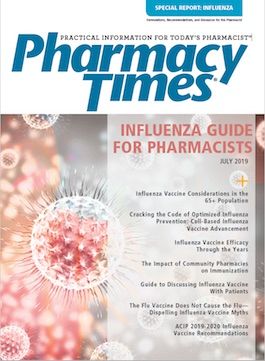Publication
Article
Supplements
The Flu Vaccine Does Not Cause the Flu
Most pharmacists have probably heard numerous versions of these statements, always said emphatically and with conviction, and with a supporting story to boot.
Most pharmacists have probably heard numerous versions of these statements, always said emphatically and with conviction, and with a supporting story to boot. One’s inclination may be to reply immediately, “That’s not true!” Another option might seem to be to list the incontrovertible facts and evidence to counteract that argument. Alternately, a pharmacist may think resignedly, “I’m not going to be able to change their mind.”
Although the CDC clearly states that the influenza (flu) vaccine cannot cause the flu, it is often difficult for patients to reconcile their health beliefs with the actual facts, for a number of different reasons. However, a scenario like the one above provides an excellent opportunity for the pharmacist to address these flu myths and educate patients on flu vaccine facts.
A contributing factor to an individual’s decision making when it comes to the flu vaccine can be explained by the Health Belief Model.1,2 This theory, developed in the 1950s, states that 6 different constructs help predict whether someone will take action to prevent, screen, or control illness. Using the flu vaccine as an example, these constructs are susceptibility to contracting the flu; perceived potential seriousness of the flu; benefits to getting the vaccine; barriers to obtaining the vaccine; cues to action (ie, strategies to trigger a person to get the vaccine, such as marketing or a direct question asking the person if they want the vaccine); and self-efficacy.1,2 In addition, an individual’s decision to get the flu vaccine is influenced by knowledge, experience, beliefs, culture, social networks, perceptions of the vaccine’s efficacy and safety, access, and cost.3
Dispelling the myths requires preemptively expecting the common misconceptions, empathizing with the complexity of factors that influence someone’s decision to obtain the flu vaccine, and attempting to reconcile their initial hesitation with the facts. Most of all, it requires optimal communication skills to present the evidence confidently and convincingly. Table 14-11 describes some common myths surrounding the flu vaccine and methods you can use to respond to patients in an attempt to dispel them.

A systematic review, published in 2015, described potential strategies to respond to vaccine hesitancy.12 In general, the strategy of enhancing knowledge and awareness was not, on its own, effective. Rather, it’s more beneficial to tailor a discussion to the specific individual and their concern. The most effective strategies had multiple components and/or a dialogue-based approach, in which providers speak with patients directly about their actual concern, as opposed to providing general education or literature. It was noted that more data are needed to assess the best ways to approach vaccine hesitancy.12
Dispelling myths surrounding the flu vaccine takes a holistic approach: A pharmacist needs to balance the evidence the patient brings with the evidence in the published literature and guidelines. Table 2 includes helpful resources to that end. Often, a delicate balance exists between respecting a patient’s beliefs and giving crucial facts. Although knowledge and awareness may allow for the dissemination of correct information about the flu vaccine, for patients to be truly willing to obtain the vaccine, an open dialogue may be key.

Sneha Baxi Srivastava, PharmD, BCACP, CDE, is an associate professor at Rosalind Franklin University College of Pharmacy in North Chicago, Illinois.
REFERENCES
- Champion VL, Skinner CS. The health belief model. In: Glanz K, Rimer BK, Viswanath K, eds. Health Behavior and Health Education: Theory, Research, and Practice. San Francisco, CA: Jossey-Bass; 2008:45-65.
- Shahrabani S, Benzion U. How experience shapes health beliefs: the case of influenza vaccination. Health Educ Behav. 2012;39(5):612-619. doi: 10.1177/1090198111427411.
- Yeung MP, Lam FL, Coker R. Factors associated with the uptake of seasonal influenza vaccination in adults: a systematic review. J Public Health (Oxf). 2016;38(4):746-753. doi: 10.1093/pubmed/fdv194.
- Misconceptions about seasonal flu and flu vaccines. CDC website. cdc.gov/flu/prevent/misconceptions.htm. Reviewed September 25, 2018. Accessed June 6, 2019.
- How influenza (flu) vaccines are made. CDC website. cdc.gov/flu/prevent/how-fluvaccine-made.htm. Reviewed September 24, 2018. Accessed June 6, 2019.
- Vaccine effectiveness: how well do the flu vaccines work? CDC website. cdc. gov/flu/vaccines-work/vaccineeffect.htm. Reviewed October 12, 2018. Accessed June 6, 2019.
- Vaccine information statement: influenza (flu) vaccine (inactivated or recombinant): what you need to know. CDC website. cdc.gov/vaccines/hcp/vis/vis-statements/flu.pdf. Published August 7, 2015. Accessed June 6, 2019.
- Guillain-Barré syndrome and flu vaccine. CDC website. cdc.gov/flu/prevent/guillainbarre.htm. Reviewed October 16, 2015. Accessed June 6, 2019.
- Sullivan SG, Price OH, Regan AK. Burden, effectiveness and safety of influenza vaccines in elderly, paediatric and pregnant populations. Ther Adv Vaccines Immunother. 2019;7:2515135519826481. doi: 10.1177/2515135519826481.
- Trombetta CM, Gianchecchi E, Montomoli E. Influenza vaccines: evaluation of the safety profile. Hum Vaccin Immunother. 2018;14(3):657-670. doi: 10.1080/21645515.2017.1423153.
- Wilkinson K, Wei Y, Szwajcer A, et al. Efficacy and safety of high-dose influenza vaccine in elderly adults: a systematic review and meta-analysis. Vaccine. 2017;35(21):2775-2780. doi: 10.1016/j.vaccine.2017.03.092.
- Jarrett C, Wilson R, O’Leary M, Eckersberger E, Larson HJ; SAGE Working Group on Vaccine Hesitancy. Strategies for addressing vaccine hesitancy—a systematic review. Vaccine. 2015;33(34):4180-4190. doi: 10.1016/j. vaccine.2015.04.040.







